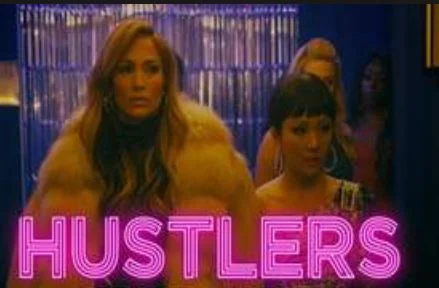Hustlers' High Time Preference Does Them In
The movie “Hustlers” is generating Oscar buzz and box office cash. Words like “empowering” and “so much effing fun” are describing the JLo vehicle, based on the 2015 New York Magazine article “The Hustlers at Scores,” penned by Jessica Pressler. Ramona (Lopez) and Destiny (Constance Wu) have been described as entrepreneurial for their client fishing, drugging, and stealing exploits.
The critics are koo koo for JLo, with Nigel Smith writing in People, “In a tweet following the premiere, Vulture‘s Hunter Harris praised the film as ‘perfect’ while predicting that Lopez will be nominated for her first Oscar for her performance.”
“Hustlers” cost $20 million to make and is closing in on $100 million in box office receipts world-wide after only a couple weeks of showings. There was a healthy Friday night crowd at a local theater when I saw the film, with the audience 80-90 percent female. It was a girls' night out to see JLo and company drain the credit cards of Wall Street A-holes--pre and post 2008 financial meltdown.
While much of the movie is set in a strip club, there is little nudity. The film, at 110 minutes is larded up with scenes of high-end shopping and champagne corks popping. The screenplay directly lifts passages from Ms. Pressler’s article, but filler was needed to make it a full-length feature. Multiple entrances, Magnificent 7-style, are provided by JLo and co-stars, along with celebrations of big scores. Eventually, hearing Ramona call someone (everyone) “BaayyBee!” might touch your last nerve.
The story does connect with the 2008 financial crash, but you won’t mistake it for “The Big Short” or “Margin Call.” Ramona takes Destiny under her wing and explains the three levels of Wall Street guys--low level, honest, but no money; mid-level, somewhat dishonest, some money; those at the top who cheat people all day and have lots of money to spend at strip clubs.
After the crash and Wall Street layoffs, strip clubs go dead in the city and the enterprising, let’s call them performers, work their old money contacts to get guys into the club. After Ramona has a customer pass out drunk and she swipes his credit card for five grand, she has a Hayekian discovery inspiration, believing she can perfect the process. Pressler writes,
Of course, it didn’t always work. Sometimes they’d go through the whole performance and the guy would be too tired to go out; they would offer him drugs for extra energy, but he would be too lame to take them. In the face of such situations, Samantha had come up with the innovation that was making her rich: a special drink spiked with MDMA and ketamine.
Samantha is the real life Ramona.
This is where the entrepreneurship turned to fraud. While these women showed some entrepreneurial can-do spirit, their high time preferences did them in. They spent everything they made and when Ramona learns a certain customer has $50,000 available credit on his card, instead of drawing only some of it as Destiny suggests, Ramona takes all 50k. “That’s the problem with these girls,” Rosie (the real Destiny) told (Pressler) of her cohort (Ramona/Samantha), shaking her head. “I see the forest. They just wanted a $50,000 tree.”
The movie portrays most men as stupid or worse. Ramona tells Destiny, while doing a lap dance, “Drain the clock, not the cock.” The occasional good guy is viewed as a hopeless sap, who can be strung along for money as needed.
JLo is, no doubt, extraordinary at age 50. However, her performance is not anymore Oscar Worthy than the acting of any aging stripper hustling at any club in America. In fact, after seeing “Hustlers” you will leave feeling the same as leaving any strip joint--cheap and sleazy.






